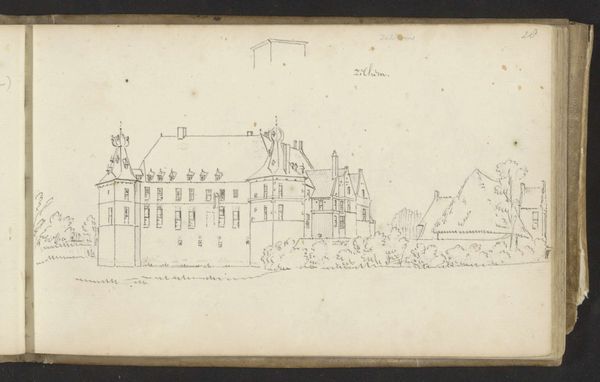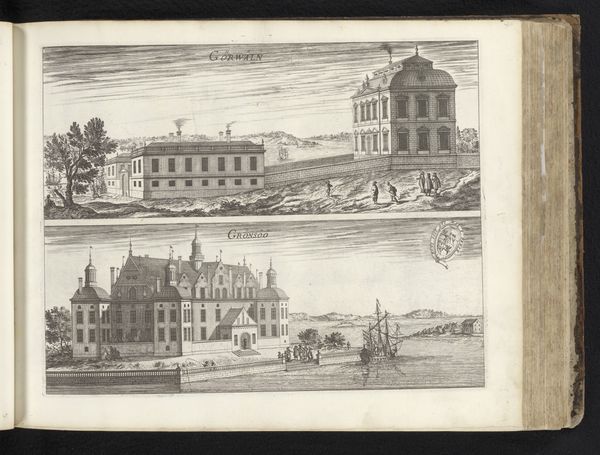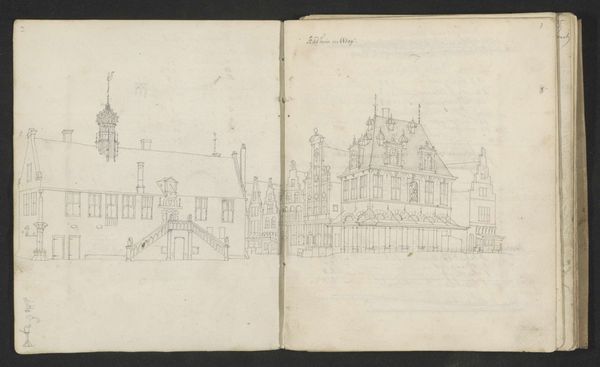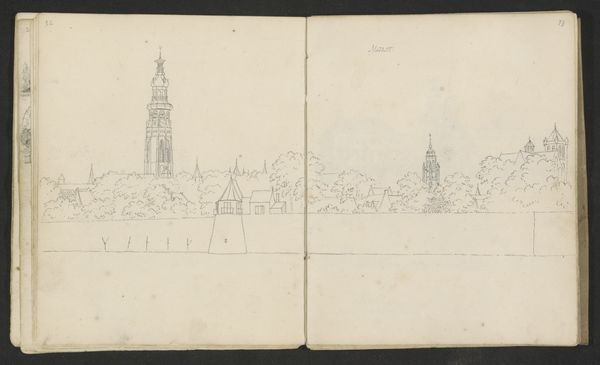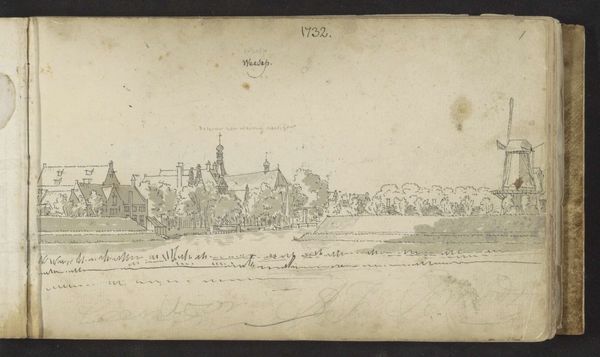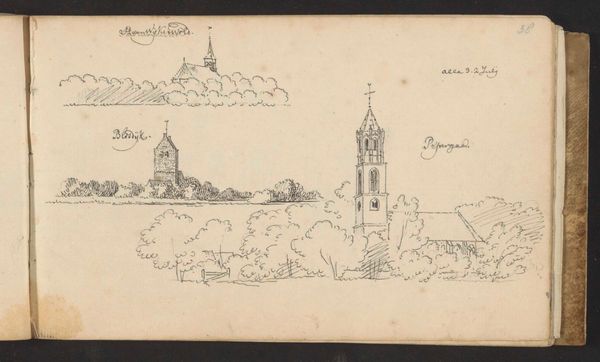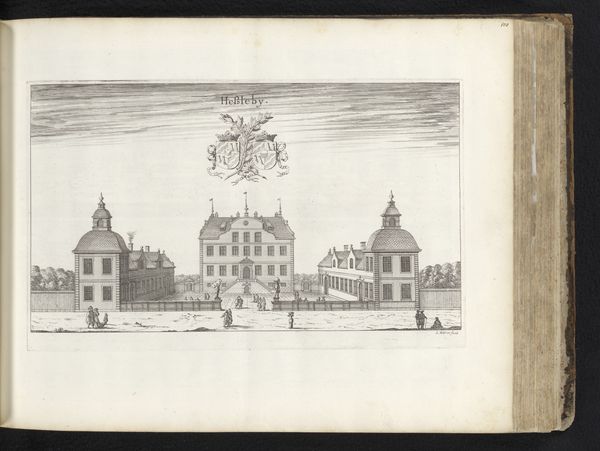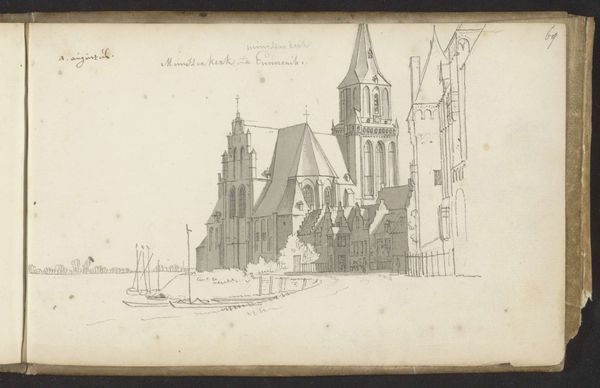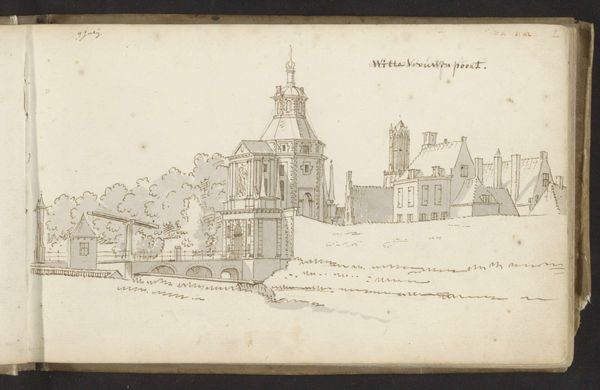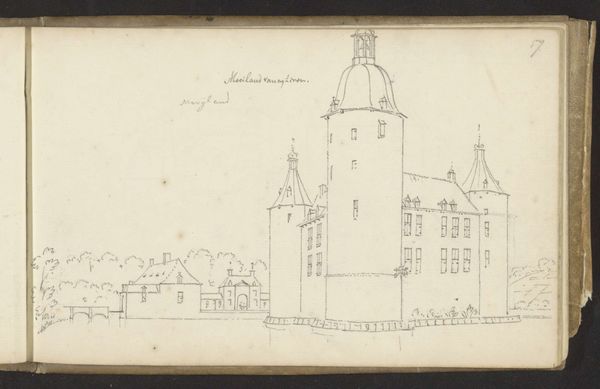
drawing, paper, pen
#
drawing
#
aged paper
#
quirky sketch
#
baroque
#
sketch book
#
landscape
#
paper
#
personal sketchbook
#
sketchwork
#
pen-ink sketch
#
pen work
#
sketchbook drawing
#
pen
#
cityscape
#
storyboard and sketchbook work
#
sketchbook art
Copyright: Rijks Museum: Open Domain
Curator: Here we have Cornelis Pronk’s “Weeshuis en Oostkerk te Middelburg,” a drawing from around 1728-1732. Editor: What strikes me immediately is its tranquil feel, despite being just a quick sketch. The way the artist layered the views gives a peaceful, almost dreamlike impression of the city. Curator: Pronk created this pen and ink drawing on paper, showcasing both architectural detail and a broader urban panorama of Middelburg. It is an interesting mix of precision and suggestive line work. Look at how the architecture of the orphanage and the East Church are meticulously rendered. Editor: I’m intrigued by how the orphanage and the church dominate the top portion, clearly signifying the prominence of civic and religious institutions in that era. These structures tell us so much about the power structures influencing urban development in Middelburg during the Baroque period. Curator: Precisely. Note the interplay between the strong, almost stoic lines defining the buildings and the softer strokes used for elements like trees and the distant skyline. This contrast brings a textural richness and visual interest to an otherwise sparse palette. Editor: The inclusion of ships and other city views in the lower sketches emphasizes the port’s role in Middelburg’s economy. It is amazing to me how a few well-placed lines create so much context. It is not just a pretty picture; it’s a historical document portraying life, religion, and economics of the time. Curator: Absolutely. Consider too, how this cityscape echoes Dutch concerns with order and perspective in urban planning. You see these notions translated to art regularly in the Dutch Golden Age. Editor: And the choice of monochrome drawing keeps the focus firmly on form, structure, and social implications, minimizing distractions. The very act of sketching implies observation, implying a study, a desire to comprehend the town’s layout. Curator: In closing, examining this sketch invites us to see beyond mere representation. It urges us to discover how cultural values crystallize into both architectural landmarks and simple, yet compelling sketches like this one. Editor: I concur. Pronk's sketch provides insight into 18th-century society, reminding us of the enduring connection between a city’s tangible structures and the beliefs that shape them.
Comments
No comments
Be the first to comment and join the conversation on the ultimate creative platform.
